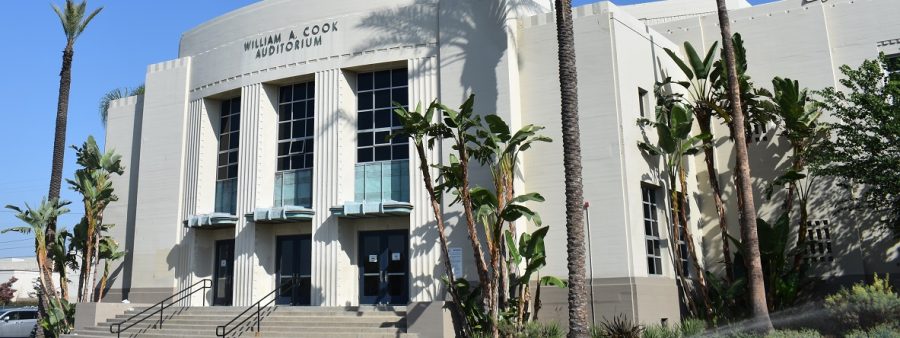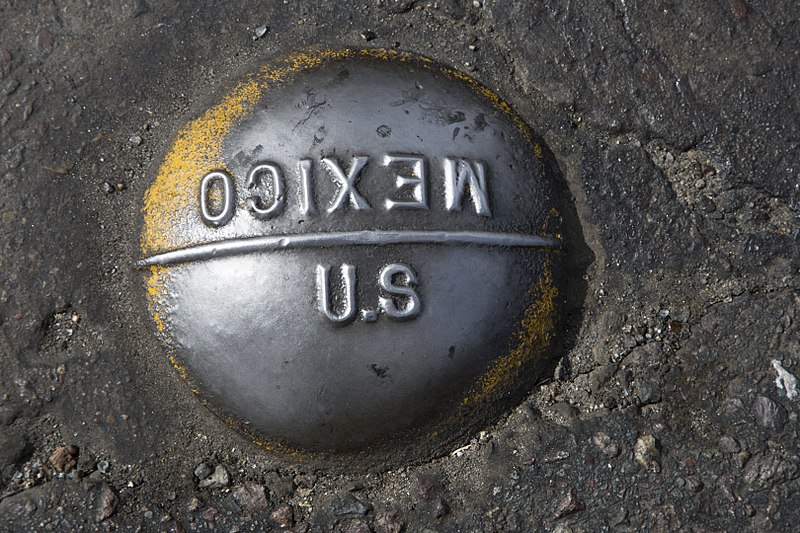The Environmental Cost of Building the Southern Border Wall
“I will build a great wall―and nobody builds walls better than me,” said President Donald Trump during his candidacy announcement speech in June of 2015. As people look at the idea of a southern border, they directly connect it back to politics and immigration; however, building a wall will affect much more than that. With the construction of a wall comes an alteration to the environment and a threat to wildlife possibly evoking irreversible effects.
According to Cynthia Miceli, an AP Environmental Science teacher at Anaheim High School, “The environmental impact that could occur is complicated. While the wall could block territory for larger mammals, it could also deter people from gathering at the wall which is also destroying the habitat by contaminating water, soil, and air. Obviously, environmental impact evaluations must be conducted to utilize conservation practices that would benefit the organisms concerned.”
German political philosopher, Karl Marx once said: “History repeats itself, first as tragedy, second as farce.” The United States has faced the consequences of building large physical barriers in the past. In the early 20th century, the U.S, Army Corps of Engineers sought to build a network of canals in the Everglades in an attempt to drain and prevent flooding as well as provide a source of water for urban and agricultural areas. However, scientists began to realize that by doing so, the environmental devastation was so great and impossible to reverse its damage. Again, in 2006, George W. Bush passed the Secure Fence Act of 2006 which mandated the construction of steel fences along large sections of the southern border. This border caused habitat fragmentation causing a higher risk of extinction for some species. Further developing this already established border to become bigger and stronger would also mean that the level of harm on the environment will increase drastically compared to that of now. When will people learn from the mistakes of the past and realize that actions always have consequences?
Wildlife

The construction of the wall on the southern border would disrupt the migrating wildlife as well as cause destruction or fragmentation of habitats of endangered plants and animals. According to a 2016 data analysis from the U.S. Fish and Wildlife Service, more than 100 animals and plants are listed as candidates, threatened, and even endangered under the Endangered Species Act of 1973. Constructing this division would stop the animal populations from roaming, thus preventing said animals from genetic diversity which is vital for their survival and consequently cause a lack of natural resources. Many species of animals and birds heavily rely on migrating across the border in search of anything ranging from nesting and reproduction sites to simply accessing season natural resources. For example, the Peninsular bighorn sheep would be faced with the inability to cross the border thus reducing the chances of re-establishing colonies of the Mexican gray wolf, jaguars, and ocelots. Building a wall would potentially lead to extinction for many endangered or threatened animals.
Flooding
After the construction of the 700-mile fencing during the George W. Bush administration (previously mentioned), there were various flooding disasters. The division also functioned as a dam causing there to be heavy flooding during the rainy season. In addition, fencing also caused a back-up of debris during storms. The accumulation of both water and debris causes soil erosion. ¨[Soil erosion] is bad because the soil would have low organic matter in the soil, which causes salinization.”said former AP Environmental Science student Carolyn Rodarte, “The soil would not be able to store a lot of water causing [the area] around the southern border to become a desert affecting crop yield due to the acidity.” Furthermore, in 2008, the city of Nogales, Arizona flooded due to the debris during a rainstorm, causing millions in property damage on the Mexican side (Nogales, Sonora). The construction on a new southern border would multiply these problems. As the discussion and contemplation continue about a solid concrete wall, the concern of flooding and debris is critical and necessary to take into consideration.
Landscape

The proposal of the border wall locates the division where it would disrupt wildlife refuges and parks. The wall would go through seven Texas wildlife conservation areas such as the Lower Rio Grande Valley National Wildlife Refuge and the National Butterfly Center. The Rio Grande Valley is one of the most biodiverse areas in all of North America. It contains more than 700 different types of species and it also serves as a convergence of two major flyways used by migratory birds. The National Butterfly Center is home to more than 200 species of butterflies. The plan for the border wall will divide the sanctuary into a 70 to 30 percent ratio where 70 percent will sit on the Mexican side of the barrier. The plans to intervene between refuges, parks, and sanctuaries place the majority of the land on the Mexican side of the border. This division would destroy the habitats of many species and would, as mentioned before, increase the risk of extinction. On a side note, it would also cost the U.S. a huge amount of money because these refuges and parks are very popular tourist attractions.
Despite all of the environmental costs that a border wall would cause, the construction of the border wall is completely exempt from needing to meet the requirements of environmental oversight laws. For example, the plans do not need to meet the requirements of the Endangered Species Act, National Environmental Policy Act, the Clean Air Act, and the Clean Water Act. After the 9/11 terrorist attacks, Congress passed the REAL ID Act in 2005 which allows Homeland Security to allow any laws if it is related to national security.
A southern border would be a disaster to not only America’s wildlife but to that of Mexico’s as well and the natural environment. These effects would be long term. That could mean the extinction of some species including those who people have dedicated decades to protect. Hopefully, those invested in building the southern wall will take into consideration the toll that a division would have on the environment and the wildlife of North America.
Your donation will support the student journalists of Anaheim High School. Your contribution will allow us to purchase equipment and cover our annual website hosting costs.

Melanie Cervantes creció en Anaheim, California. Ella tiene dieciséis años y cursa su último año en Anaheim High School. Ha sido parte del Dual...






